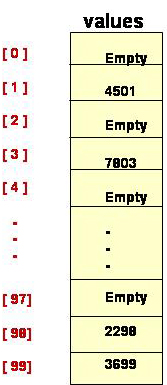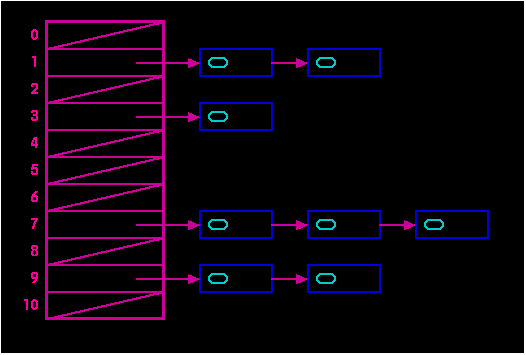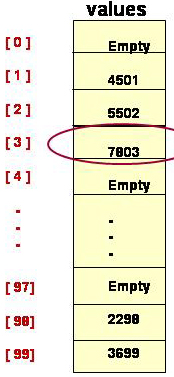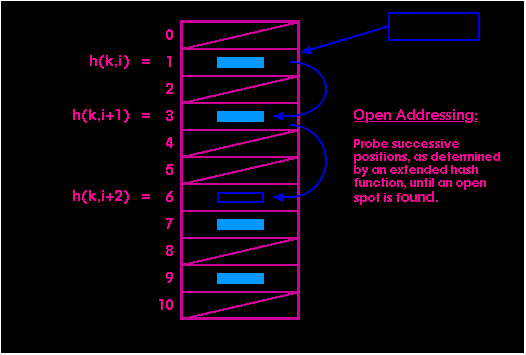CS3240: Data Structures and Algorithms |
||||||
|
Hashing
This hash function can be used to store and retrieve parts in an array. key = part Number Hash(key) = partNum % 100 |
Example: Placing element into Hash Table
Hash(5502) = 5502 % 100 = 2 |
Problem: Collision in hash entry
Solution 1: store at the array a linked list of collision elements.
(chaining hashing or seperate chaining)
|
Example Hash Functions
|
RehashingWhen table gets too full, time for operations takes too long, insertions start to practically fail. Create a new larger table, (e.g. 2 times as big), with a new hash function and scan down the original hash table, and insert in the new table. Relatively expensive O(N).
|
Applications of Hash
|
 HandyParts
company makes no more than 100 different parts. But the parts all
have four digit numbers.
HandyParts
company makes no more than 100 different parts. But the parts all
have four digit numbers.  Use
the hash function Hash(key) = partNum % 100 to place the element
with part number 5502 in the array.
Use
the hash function Hash(key) = partNum % 100 to place the element
with part number 5502 in the array. 


